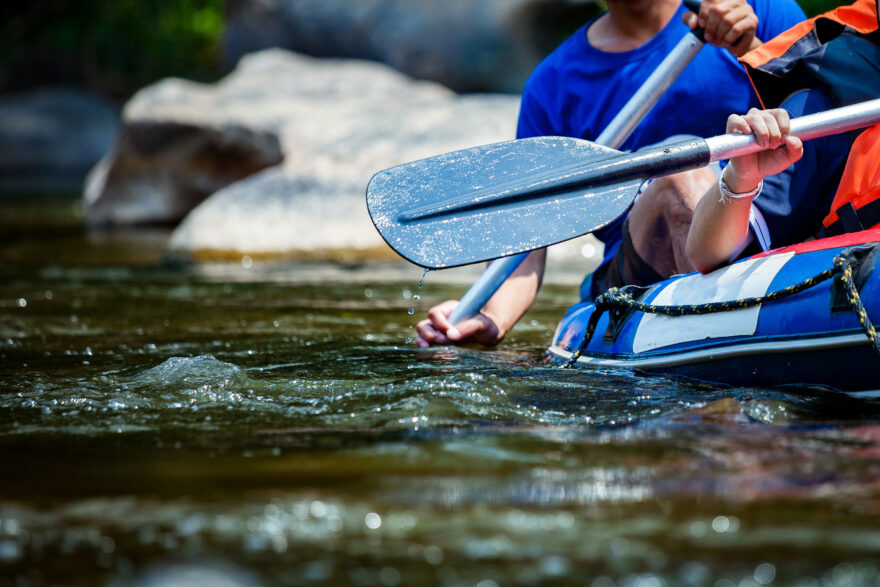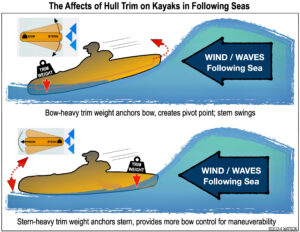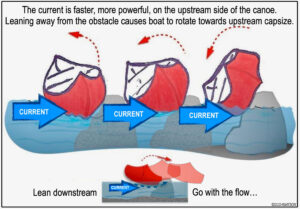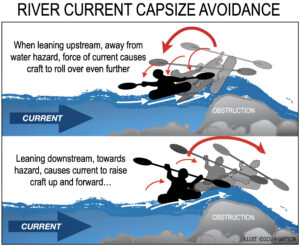
Image by PPstock, Shutterstock
The action of water, whether on larger bodies or forceful currents in flowing rivers, often challenge paddlers to maintain control of their boats.
One of the more common conditions across open bodies of water is the wind, and subsequent waves that create following seas — seas that come at you from behind, pushing you forward, and sometimes uncontrollably side to side.
Here are a few ways to handle yourself on the water should you find yourself in some dicey situations:
Large Bodies of Water
How you and your boat deal with this force affects both the directional control of your canoe/kayak, but also to what extent your bow might plow down into the waves that rise up beyond your bow as the wave passes.
The distribution of weight (as well as how you position yourself in your seat by adjusting your center of gravity) affects the “trim” of your craft and how it moves in response to that force from the stern.

Illustration by Tom Watson
Imagine your boat as a weathervane, the heavier end is going to pivot and turn into the wind, swinging on that fixed point at your center of gravity. A heavier stern is going to anchor the end of the boat into the water, causing the boat to pivot at that point. That means your bow is going to swing left/right and be higher out of the water. With a following wind, you should be able to steer easier, reduce the chance to weathercock and maintain more control of your boat.
Trim the weight more to the front, and now the bow is anchored, and the boat pivots more around that point. This means that the stern is swaying and becomes more subject to being pushed right or left by the following seas. On an evenly trimmed boat, the paddler can lean forward (bow pivot) or backward (stern pivot) to help counter that weathervane effect in most cases.
Knowing what big water/ocean wind patterns may be like will help you decide how to trim your boat prior to making a crossing when exposed to those conditions.
Rivers
A common mishap on flowing waters is a collision with a boulder or other obstacle along the course of flow that causes your canoe/kayak to broach sideways and becoming pinned against the obstacle by the force of the current against the hull.
It might be instinctive for a novice to want to lean opposite the hazard — up-stream against the pushing current.
Bad idea!

Illustration by Tom Watson
The force of the current against your hull and along the keel will cause the boat to rotate counter-clockwise, upstream and into the face of the force. By leaning in that same direction you add to the rotation and over you go.
If you lean downstream and into the hazard/obstacle (initially counter intuitive perhaps), you are actually using the force of the water to lift you up and flow you over the hazard. Using your paddle and shifting weight as the water moves the boat down-stream can oftentimes lift you over or around the hazard without mishap.
Working with the weight/trim of your boat, along with you adjusting your weight properly can oftentimes remedy what otherwise can make for rough maneuvering … or worse.

Illustration by Tom Watson
Tom Watson is an award-winning outdoor safety and skills columnist and author of guide books on tent camping, hiking and self-reliant survival techniques. His website is www.TomOutdoors.com.
 Your Privacy Choices
Your Privacy Choices